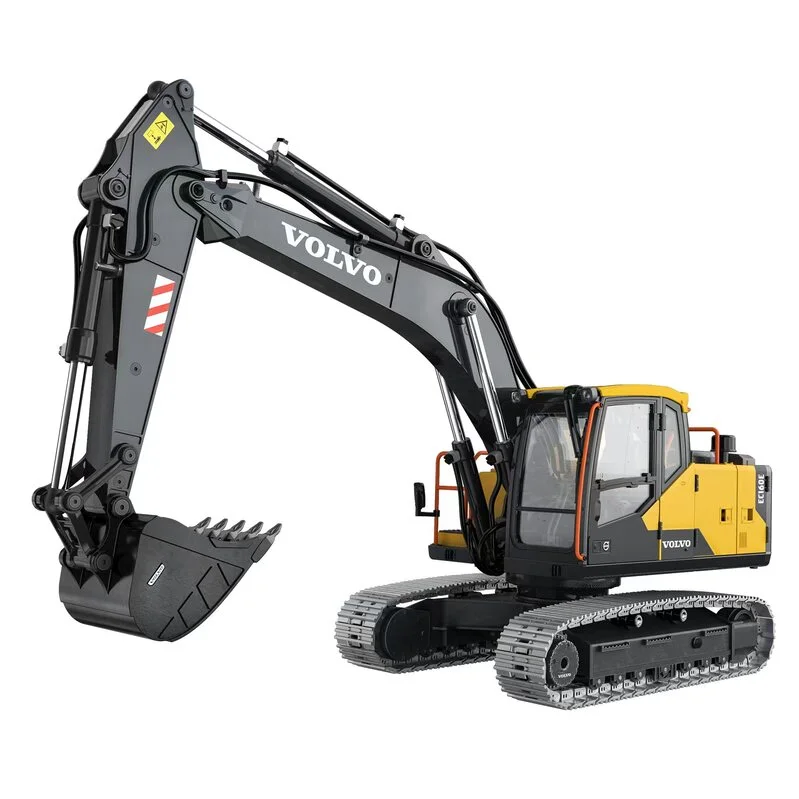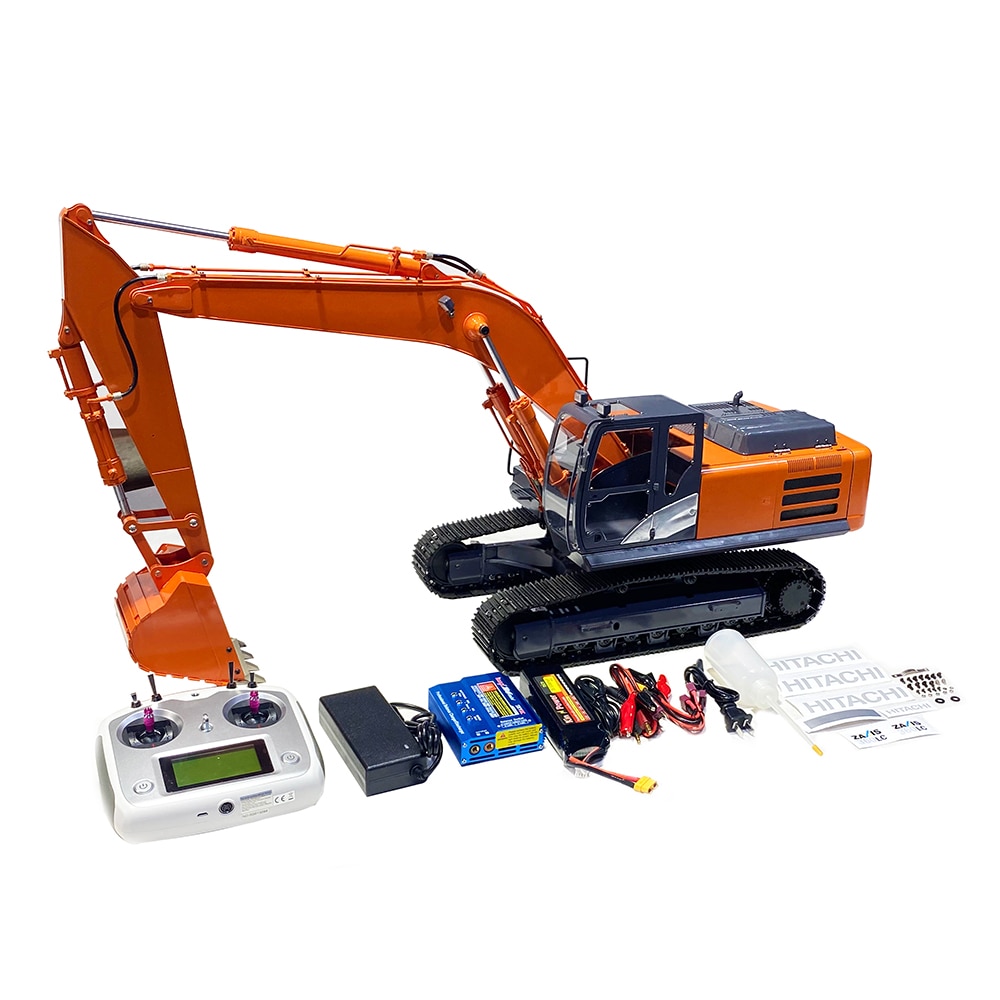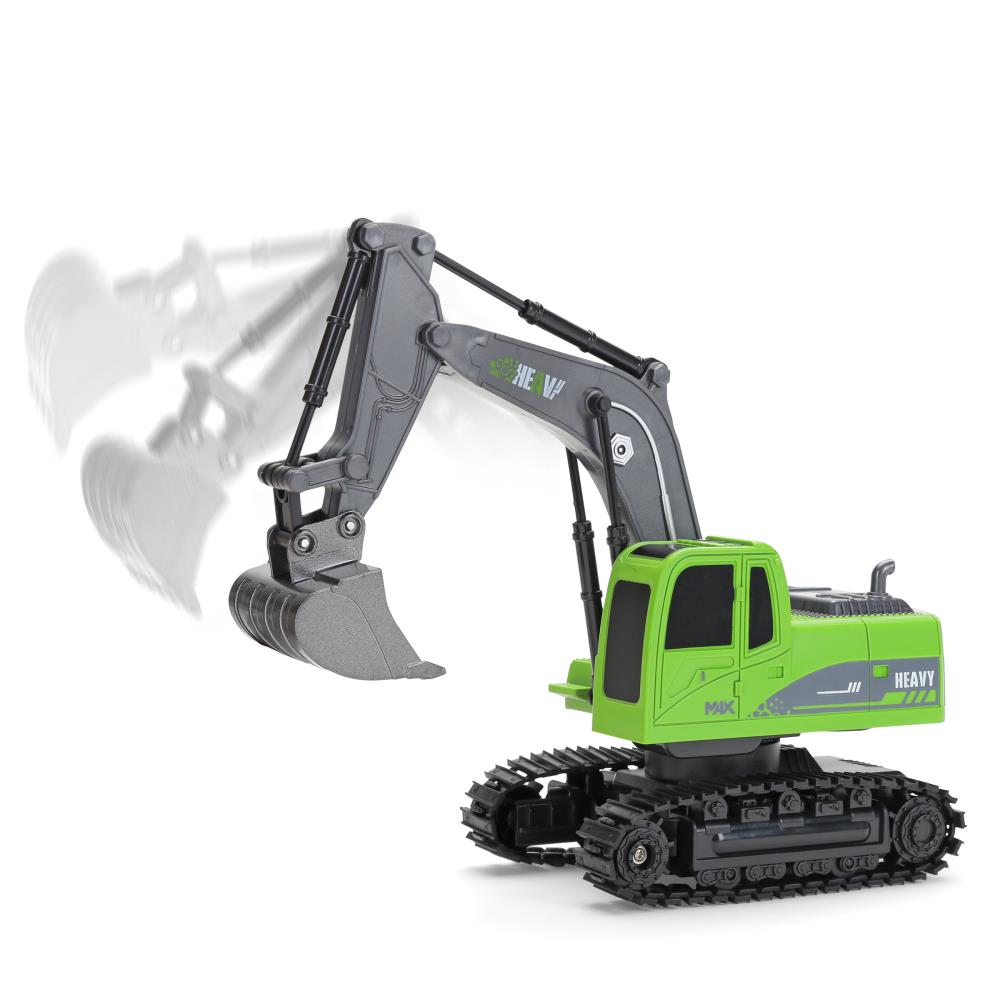The Essential Attributes of Excavator That Keep It a Must-Have Tool
Excavators are essential in the construction and landscape design sectors. Their flexible attachments enable an array of jobs, from excavating to demolition. Additionally, they boast superior digging depth and reach, powered by robust engines. Operator comfort and small styles improve functionality in different environments. What truly establishes excavators apart are their advanced hydraulic systems and resilience. Understanding these attributes can clarify why they are thought about necessary tools on any kind of job website.
Flexible Add-ons for Enhanced Performance
Excavators are powerful equipments on their own, the addition of flexible attachments greatly improves their performance. These attachments change a basic excavator right into a multi-purpose tool, suitable for a range of tasks. Containers, for example, been available in various sizes and shapes, enabling drivers to dig, scoop, and move materials efficiently. Hydraulic thumbs can be added for improved gripping and handling of cumbersome things, such as logs or rocks.Furthermore, specialized add-ons like augers and breakers permit for boring and demolition job, expanding the excavator's energy on construction sites. remote control excavator. Grapples are an additional option, suitable for relocating and sorting debris. This flexibility not just enhances productivity but likewise minimizes the need for numerous devices, conserving time and prices. By furnishing excavators with the right accessories, drivers can deal with diverse tasks, making them vital in the construction industry
Superior Excavating Depth and Get To
Excavators are designed with premium excavating deepness and reach, permitting them to maneuver in tight rooms and access hard-to-reach areas. This capability is crucial for numerous building and excavation tasks, where standard machinery may drop short. With flexible boom arms and extendable tracks, excavators can quickly browse unequal surface while maintaining stability.The excavating depth can differ substantially among models, frequently ranging from 10 to 25 feet, depending upon the style and purpose. This feature allows drivers to dig deep into structures, trenches, and various other deep structures efficiently. In addition, the reach of an excavator enables exact digging and material handling without rearranging the machine frequently, conserving time and labor costs.Ultimately, the superior digging depth and reach of excavators make them essential for specialists seeking to complete intricate tasks with precision and efficiency. Their flexibility boosts performance on task websites, showcasing them as a vital tool in modern-day building and construction.
Powerful Engine Performance

Effective engine performance plays a crucial function in the abilities of an excavator when it comes to efficiency and performance on building sites. A robust engine creates considerable horsepower, permitting the device to take on sturdy jobs effortlessly - remote control excavator. This stamina equates right into faster cycle times, allowing drivers to complete jobs extra quickly.Additionally, powerful engines supply the needed torque to manage challenging surfaces and varied tons, making sure that the excavator can execute successfully under various problems. Whether it is lifting, excavating, or moving products, the engine's performance directly impacts the total operational efficiency of the machine.Furthermore, advancements in engine innovation have caused improved gas performance, lowering functional prices while keeping power output. Ultimately, the engine's efficiency serves as the foundation of an excavator, affirming its condition as a crucial device in the construction market
Advanced Hydraulic Systems

Enhanced Lifting Capability
A considerable enhancement in lifting ability can be credited to innovative hydraulic systems found in modern excavators. These systems utilize high-pressure liquid to produce higher pressure, enabling drivers to raise much heavier tons easily. The engineering behind these hydraulics assurances peak performance, giving a remarkable power-to-weight ratio that improves total efficiency. Because of this, excavators can deal with requiring tasks, such as raising big products or tools, without jeopardizing stability. Additionally, the durable layout of hydraulic elements adds to boosted sturdiness and reliability, making them suitable for different construction environments. This enhanced lifting capability not just reduces the time required for projects but likewise decreases the requirement for extra equipment, confirming vital for both performance and cost-effectiveness in the construction market.
Boosted Accuracy Control
Standard excavators typically battled with accuracy, modern hydraulic systems have actually transformed control devices, enabling drivers to carry out tasks with exceptional precision. These advanced systems utilize symmetrical control valves that permit smoother and extra receptive motions, significantly decreasing the margin for error. Operators can currently carefully tune the excavator's motions, making it simpler to browse tight rooms and handle delicate products. Boosted feedback systems further notify operators of real-time performance, making certain ideal coordination in between the equipment and driver. This boosted precision not only boosts efficiency yet also improves safety and security on job websites, minimizing the threat of accidents. Therefore, contemporary excavators equipped with sophisticated hydraulic systems are important devices for building and excavation projects calling for precise precision.
Driver Comfort and Visibility
Operator comfort and presence are crucial parts in the design of contemporary excavators (remote control excavator). Attributes such as ergonomic seat layout, boosted exposure options, and reliable control formats greatly enhance the operator's experience and productivity. Focusing on these facets assurances that operators can work successfully and safely in different conditions
Ergonomic Seat Design
Convenience and exposure are extremely important in excavator style, with the ergonomic seat playing a vital function in boosting the driver's experience. An ergonomic seat is engineered to support the operator's body, minimizing fatigue throughout lengthy hours of operation. Flexible attributes, such as seat elevation, backrest angle, and back assistance, satisfy private preferences and promote ideal posture. These modifications improve comfort and make it possible for the driver to keep concentrate on jobs without pain. Furthermore, a well-designed seat can give much better side support, allowing for try this out smoother handling when the excavator functions. This thoughtful layout not just enhances performance yet additionally adds to total security, making certain that operators can perform their tasks efficiently and efficiently.
Improved Presence Features
The style of an excavator prolongs past just the seat, with improved exposure features playing a considerable function in operator comfort and overall security. Huge home windows and strategically positioned mirrors give drivers with a clear view of their environments, decreasing blind areas. This design factor to consider permits for much better spatial understanding, which is vital in active workplace. Additionally, lots of excavators integrate rearview cameras and advanced monitoring systems that aid operators in maneuvering limited areas. The integration of these visibility features not just advertises security but additionally decreases operator tiredness by allowing much easier tracking of workspace. Eventually, boosted exposure adds to extra efficient operations and aids ensure that excavators can do their tasks efficiently and safely.
Control Design Effectiveness
While handling complicated work websites, an effective control layout greatly enhances both operator comfort and visibility. A properly designed control setup assurances that drivers can access essential features with minimal initiative, minimizing tiredness during lengthy hours. Ergonomic joystick placements and instinctive button plans enable smooth procedure, enabling operators to maintain emphasis on the job handy. Furthermore, clear visibility of both the job location and the control panel is important for safety and security and precision. Modern excavators frequently integrate adjustable seats and control settings to suit various operator preferences, additionally improving convenience. Eventually, a thoughtfully made control format not only improves performance but also cultivates a much safer working environment by allowing drivers to react swiftly to altering conditions.
Compact Design for Urban Environments
As metropolitan building sites commonly face room restraints, a small style comes to be necessary for excavators operating in these environments. These machines are engineered to browse tight areas, permitting reliable ability to move in jampacked task sites. A reduced footprint allows them to function very closely to existing frameworks, lessening disturbance and optimizing productivity.The small style usually includes shorter tracks and a tighter transforming span, promoting operation in slim alleys and constrained locations. Additionally, light-weight products add to ease of transport, making it easier to relocate the excavator from one place to another within the urban landscape.Additionally, several small excavators are furnished with functions such as functional add-ons and extendable arms, improving their performance while maintaining a little size. This versatility permits operators to take on a range of jobs, from digging to demolition, all while suitable flawlessly into the restraints of urban settings.

Toughness and Upkeep Considerations
Resilience stands as an essential consider the performance and long life of excavators, particularly in requiring metropolitan environments. These machines undergo rigorous conditions, including differing dirt kinds, severe temperature levels, and high-frequency usage. Premium products and durable construction are needed for ensuring that excavators can hold up against these obstacles without endangering functionality.Regular maintenance is similarly essential in maintaining longevity. Scheduled evaluations, prompt oil adjustments, and the replacement of worn components add significantly to an excavator's lifespan. Operators has to additionally pay focus to hydraulic systems, tracks, and undercarriages, as these parts typically birth the burden of wear and tear.Investing in resilient excavators with considerable maintenance plans boosts dependability and decreases downtime, inevitably bring about increased productivity on building and construction sites. Understanding the interaction between toughness and maintenance is crucial for anybody thinking about the procurement of an excavator for city projects.
Often Asked Inquiries
Exactly How Do Excavators Compare to Other Building Equipment?
Excavators attract attention among building and construction devices as a result of their convenience, enabling tasks such as excavating, grading, and lifting. Contrasted to others, their hydraulic abilities use better efficiency and power, making them essential on various job sites.
What Security Includes Are Consisted Of in Modern Excavators?
Modern excavators include numerous safety attributes, including rollover security systems, alarm systems, and progressed presence improvements. These components interact to lessen dangers, making sure operator security while enhancing effectiveness on building and construction sites and other demanding environments.

Can Excavators Be Utilized in Winter Months Issues?
Excavators can without a doubt be used in wintertime problems, offered they are outfitted with suitable winter accessories and safety measures are taken. Correct upkeep and modifications enhance their efficiency, ensuring effective operation despite challenging climate situations.
What Is the Average Life-span of an Excavator?
The average life-span of an excavator usually varies from dig this 7,000 to 10,000 hours of procedure. This duration can considerably rely on maintenance methods, operating conditions, and the specific model's sturdiness and style attributes.
Just how Do I Select the Right Excavator Size for My Task?
Picking the ideal excavator size involves examining project scope, website problems, and material types. Think about factors like reach, deepness needs, and weight ability to ensure optimal effectiveness and security during operation. Size issues considerably in task success. Additionally, the reach of an excavator enables for specific excavating and material handling without rearranging the maker frequently, saving time and labor costs.Ultimately, the exceptional digging depth and reach click here for more of excavators make them vital for professionals seeking to complete intricate tasks with precision and effectiveness. Convenience and presence are vital in excavator design, with the ergonomic seat playing a vital role in improving the operator's experience. The style of an excavator extends past simply the seat, with improved presence functions playing a considerable function in driver convenience and general security. Modern excavators frequently integrate adjustable seats and control settings to suit different driver preferences, better improving convenience. Lightweight materials contribute to relieve of transportation, making it easier to relocate the excavator from one area to one more within the city landscape.Additionally, lots of portable excavators are outfitted with attributes such as versatile accessories and extendable arms, boosting their performance while maintaining a little dimension.